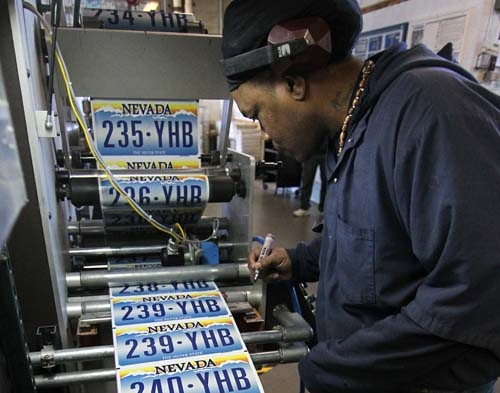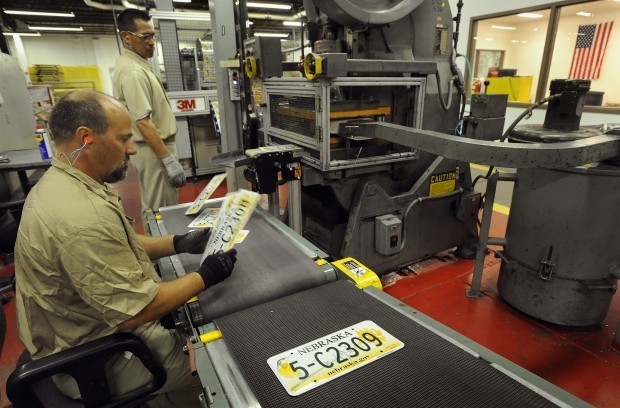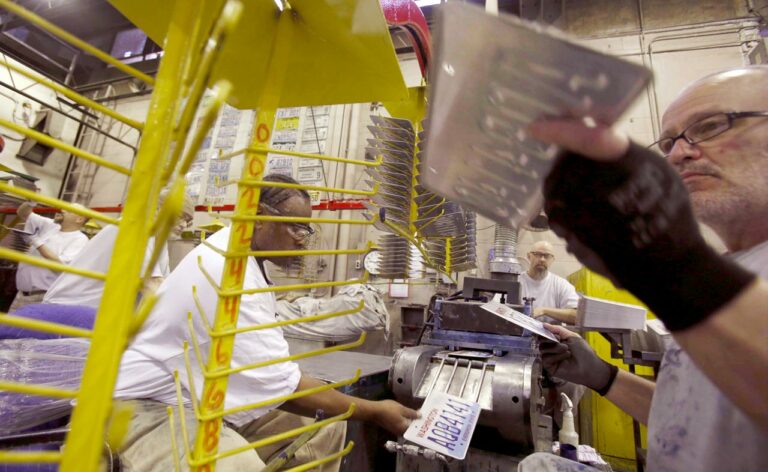Most states in America can’t afford to provide inmates with equipment like screens and cutting presses required for license plate making. So instead of providing them with these tools, most prisons simply contract out their license plate needs at much lower costs than what it would cost them if they were to use inmate labor.
80% of license plates are created in American prisons, approximately prisoners make license plates in 39 out of the 50 states in the USA. The prisoners create license plates by cutting the words and numbers on strips of metal. They then stamp these strips into license plates using machines that are also recently bought by prisons.
States buy prison-made license plates because they’re much cheaper than buying them from a different company. The prisoners do not get any of the profits, instead, more funding is funneled to improve prison security or provide better healthcare for inmates.
Why Do Prisoners Make License Plates?

The idea of having prisoners make license plates was started by two men in 1979; it has since become an industry of its own even though prisoners don’t get paid anything for their work. 97% of all manufacturers of license plates in America source out their work to American-made prisoner-made license plates.
Some Americans believe purchasing prison-made products like license plates supports a prison culture of forced free labor. In America, all prisoners are required to do work as a punishment for their crimes. Prisoners make license plates to offset costs and generate more revenue for the state.
The majority of inmates were already employed before they went to prison so it makes sense that prisons hire them to programs like these because it doesn’t interfere with their normal duties and routines. However, some still think this system is unjust and unfair because prisoners could be breaking rocks in the hot sun or doing something actually productive with their time instead of making license plates.
On average, prisoner-made license plates save states $200 per year per car registered in the region where they’re produced; that means almost $81 million was saved by American taxpayers.
The profit from the contract goes mainly to offsetting incarceration costs or funding extra prison programs like drug rehabilitation or work training programs (which can help teach valuable job skills). In this way, it is often argued that such a program could allow $200K worth of inmate labor to go towards $1 million worth of public work.
While some people think that prisoners should be doing more productive things with their time, most states see license plate production as a way to cut costs. It’s important to remember that although the inmates are being positioned in an exploitative labor situation, they are still being compensated by getting their regular room and board covered (which is not always guaranteed for everyone).
While most prisons like to keep their use of outside contractors hush, Warrick County, Indiana has gone public with the fact that they outsource their license plate production. The reasoning behind this is likely because they are proud of their excellent quality.
How Do Prisoners Make License Plates?

The process of making license plates is split into three steps:
- Cutting
- Beating
- and pressing
Material preparation for the cutting machines includes punching holes in the sheet metal provided by the prisons. The next step is to cut out each piece which involves pulling a handle on a machine that looks almost like an oversized paper cutter. It takes two prisoners to hold down one license plate while another inmate pulls its handle.
Afterwards, they are tumbled over with sandpaper so that their edges are smooth enough to be stamped using one of five or six stamping machines similar to those used at commercial presses. These machines use molds of words and numbers that create state-specific letters and license plate numbers; depending on what state you’re in, the machine will use a different plate mold.
The finished product is then verified to meet state standards and packaged into rolls of 500 license plates before being boxed up and shipped to their destinations. None of these steps require any sort of skill or training and each prisoner does this for eight hours every single day, all year round.
Do Prisoners Get Incentives For Creating Number Plates?
Understandably, there’s very little incentive for prisoners to behave because they receive no money from what they make nor do they get good time credit; in fact, some people think that prison work programs like this one keep inmates more focused on their punishments than thinking about how to gain privileges by behaving well. At least one program has been created where inmates earn points through certain behaviors which can be traded in for items at the commissary; this is seen as a much fairer alternative.
The majority of American prisoners that make license plates are doing so for life sentences or extremely long incarcerations like 40-year terms, which makes them unlikely to ever get back out into society again even if they’re model inmates. Therefore, it’s not hard to see why many people get angry about supporting these kinds of programs despite their ability to save taxpayers millions while providing useful work skills at the same time.
Conclusion
Currently, most states outsource their license plate production either to private corporations which use prisoner labor or to the federal government. Currently, prisoners create license plates inside of prisons as it’s more efficient, cheaper, and provides work for those incarcerated.

